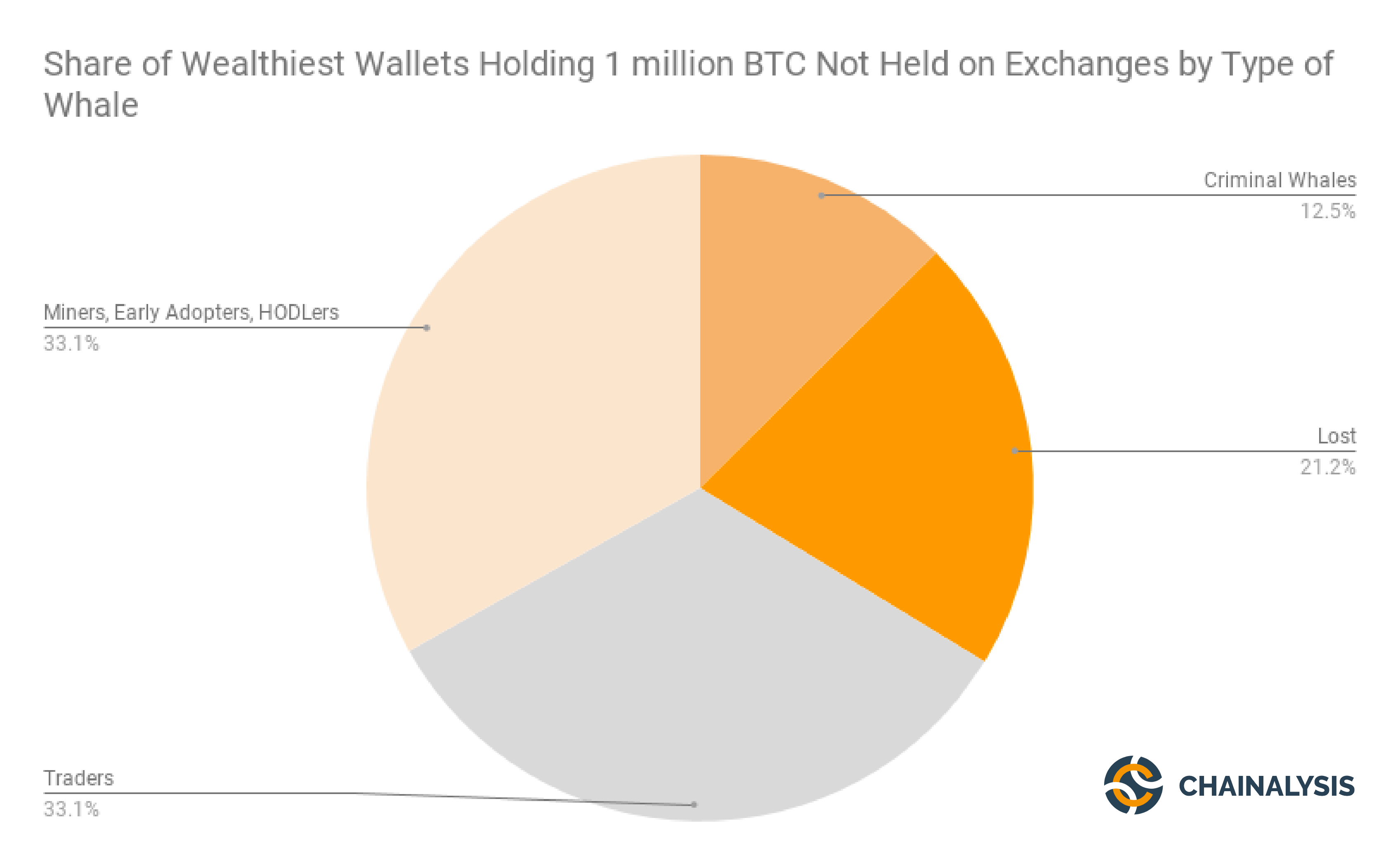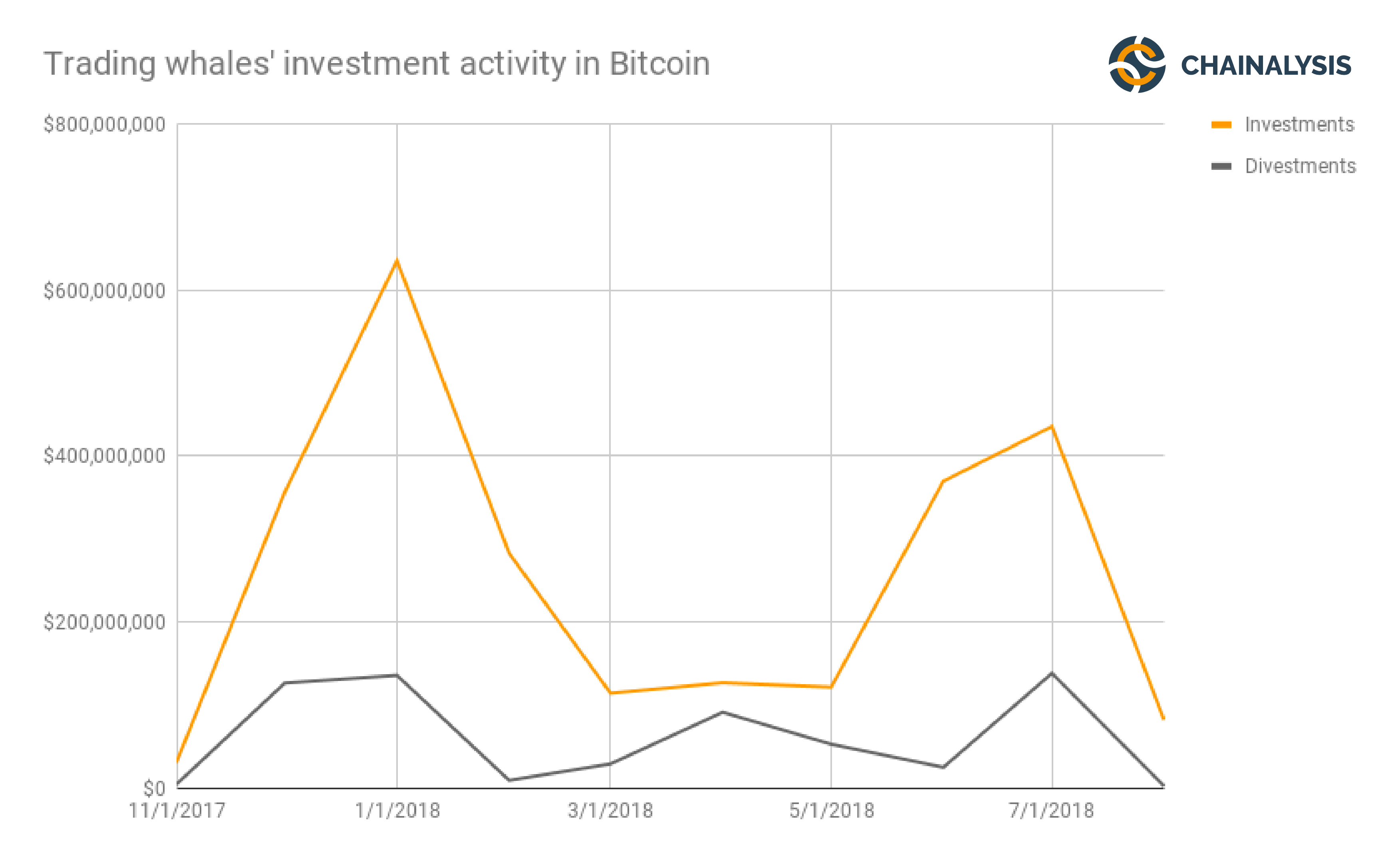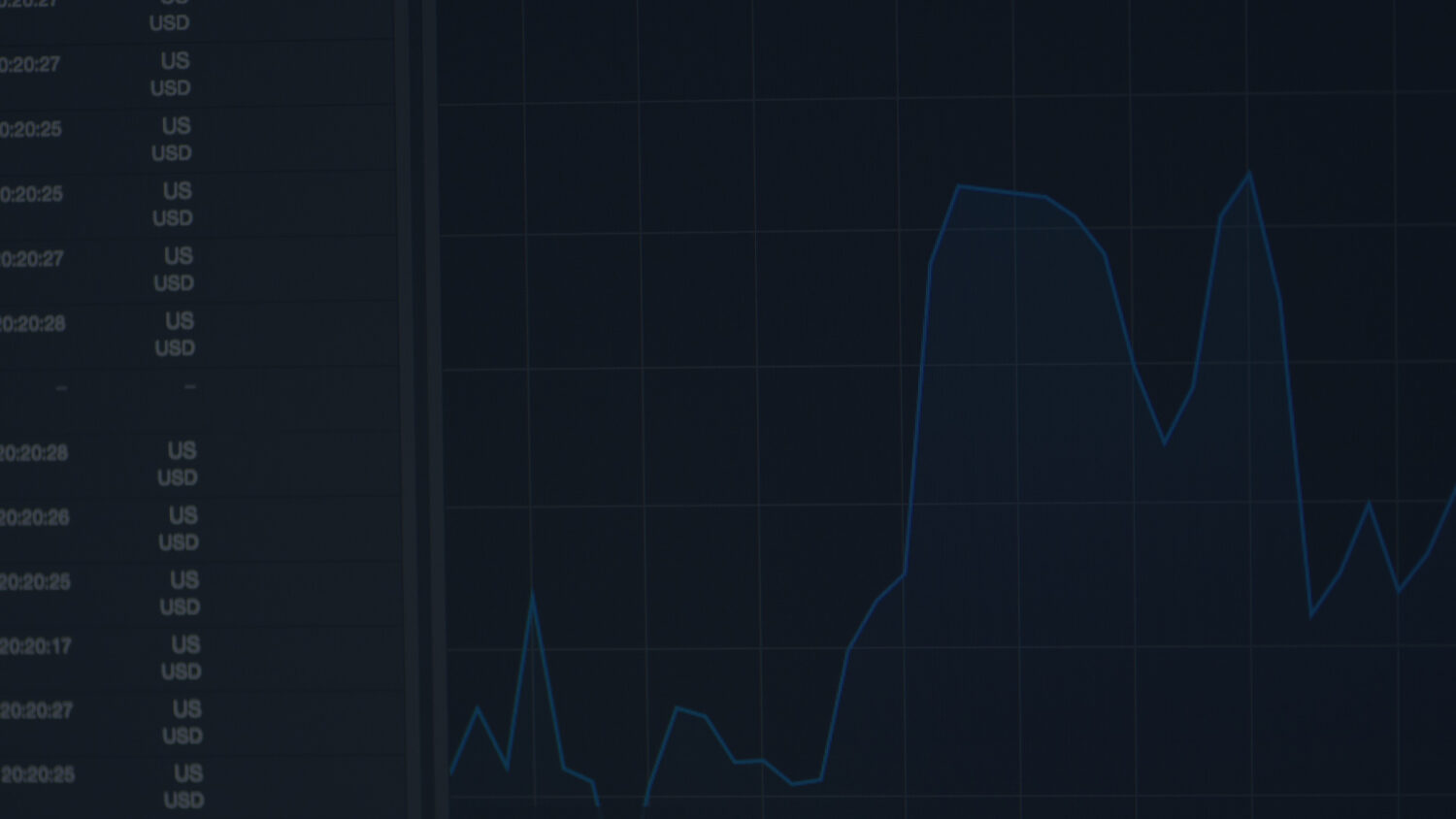New data shows that bitcoin’s largest holders are a diverse group that may be stabilizing, rather than destabilizing, the market.
In August 2018, rumors flared about a $2 billion whale, or outsized bitcoin holder, who was suspected of single-handedly setting off a 15% plunge in bitcoin’s value by selling off more than 50,000 coins in a month, according to Bloomberg. The abrupt drop in value—and whispers of its shadowy origins—made bitcoin investors of all sizes wary of a market that might be dominated by a few giant players, who could undermine pricing at any moment.
Intensive analysis of bitcoin’s 32 largest wallets, however, shows these fears to be overblown. Our data demonstrates that Bitcoin whales are a diverse group, and only about a third of them are active traders. And while these trading whales certainly have the capability of executing transactions large enough to move the market, they have, on net, traded against the herd, buying on price declines. They appear, in aggregate, to have stabilized the market during recent price declines, rather than exacerbating price movements. This makes sense since these trading whales are professionals with no vested interest in abruptly tanking the market. When they require liquidity, traders are likely to use OTC trading platforms equipped to manage large transactions with minimal market disruption.
A taxonomy of Bitcoin whales
We analyzed the transactional history of the 32 largest bitcoin wallets not on exchanges as of August 2018 to develop a taxonomy of whales. They represent roughly one million bitcoins, or about $6.3 billion dollars. The data revealed four basic types of whales:
- Traders: These whales regularly engage with exchanges to buy and sell bitcoin. With nine wallets controlling over 332,000 coins, worth just over $2 billion, whales who actively trade make up the largest category, but only about a third of total whale holdings. Traders are also relatively recent arrivals in the Bitcoin universe: most got into the market in 2017.
- Miners/Early Adopters: The second largest group of whales entered the market much earlier, prior to 2017. This group includes 15 investors, also holding a total of 332,000 coins, worth a bit more than $2 billion. Current trading activity for this group is extremely low. Many of them made significant divestments in 2016 and 2017 as the bitcoin price soared and are now, we assume, extremely wealthy.
- Lost: Lost whales make up another large part of the pod with five wallets holding over 212,000 coins, worth approximately $1.3 billion. These are wallets where the owner has lost their private keys and can no longer access their bitcoin. By definition, there have been no transactions at all from these whales since 2011.
- Criminals: This is the smallest segment amongst the whales with three wallets, over 125,000 coins and just short of $790 million in asset value. Two of these whales are connected with the Silk Road darknet market, while the other appears to be involved in money laundering.

Are whales driving price volatility?
As our taxonomy makes clear, only the traders, representing about one-third of whale assets, are actively buying and selling bitcoin. Early adopters/miners and criminals have been in a holding pattern in recent years and lost bitcoin whales have, by definition, been inactive since 2011 (and, we assume, will remain so indefinitely).
But are these trading whales exacerbating volatility? The data suggests otherwise. During the major price declines of December 2017 and most of 2018, trading whales were actually net purchasers of bitcoin. Although our data doesn’t capture on-exchange transactions, it does measure the net gain or loss of bitcoin in these wallets. That net activity demonstrates that trading whales were not selling off bitcoin in any mass amount, but rather were net receivers of bitcoin from exchanges in late 2016 and 2017. This indicates that trading whales were, in aggregate, buying on declines and, consequently, were a stabilizing, rather than destabilizing factor in the market, as shown in the chart below.

Towards greater transparency
Bitcoin whales will likely continue to be an object of fascination for investors—their great wealth and anonymity make them inherently interesting. To be useful, though, analysis has to go beyond a sort of Lifestyles of the Rich and Famous gossip to real data on how these very large bitcoin holders interact with and affect markets. Our research suggests that while Bitcoin whales may be big and somewhat mysterious, they have less of an impact on market prices than many people believe.
